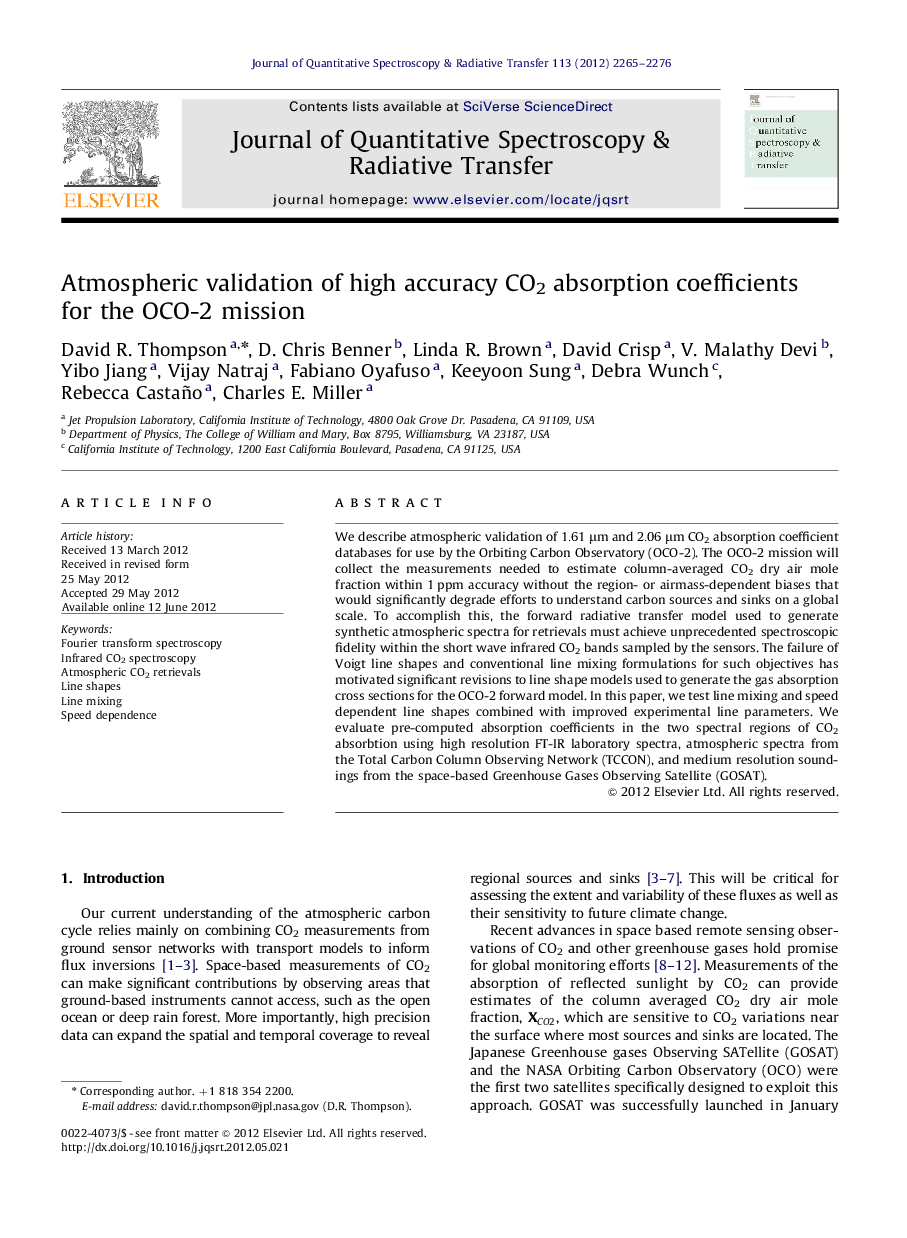| Article ID | Journal | Published Year | Pages | File Type |
|---|---|---|---|---|
| 5428958 | Journal of Quantitative Spectroscopy and Radiative Transfer | 2012 | 12 Pages |
We describe atmospheric validation of 1.61μm and 2.06μm CO2 absorption coefficient databases for use by the Orbiting Carbon Observatory (OCO-2). The OCO-2 mission will collect the measurements needed to estimate column-averaged CO2 dry air mole fraction within 1 ppm accuracy without the region- or airmass-dependent biases that would significantly degrade efforts to understand carbon sources and sinks on a global scale. To accomplish this, the forward radiative transfer model used to generate synthetic atmospheric spectra for retrievals must achieve unprecedented spectroscopic fidelity within the short wave infrared CO2 bands sampled by the sensors. The failure of Voigt line shapes and conventional line mixing formulations for such objectives has motivated significant revisions to line shape models used to generate the gas absorption cross sections for the OCO-2 forward model. In this paper, we test line mixing and speed dependent line shapes combined with improved experimental line parameters. We evaluate pre-computed absorption coefficients in the two spectral regions of CO2 absorbtion using high resolution FT-IR laboratory spectra, atmospheric spectra from the Total Carbon Column Observing Network (TCCON), and medium resolution soundings from the space-based Greenhouse Gases Observing Satellite (GOSAT).
⺠We evaluate 1.61 and 2.06μm CO2 absorption cross sections for OCO-2 retrievals. ⺠A new database uses a speed-dependent profile and nearest-neighbor Line Mixing (LM). ⺠We compare results to a benchmark using Voigt line shapes and an alternative LM model. ⺠Atmospheric retrievals show consistent benefits to orbital and uplooking spectra.
